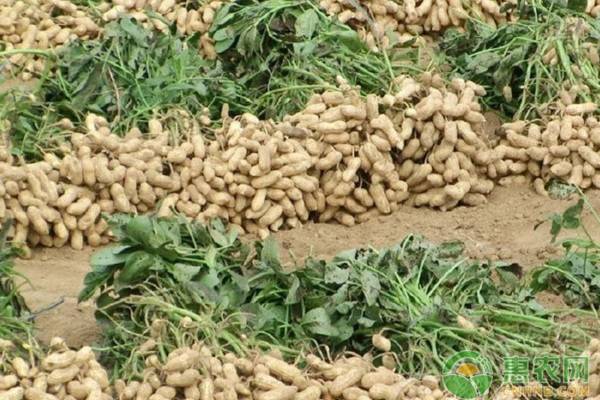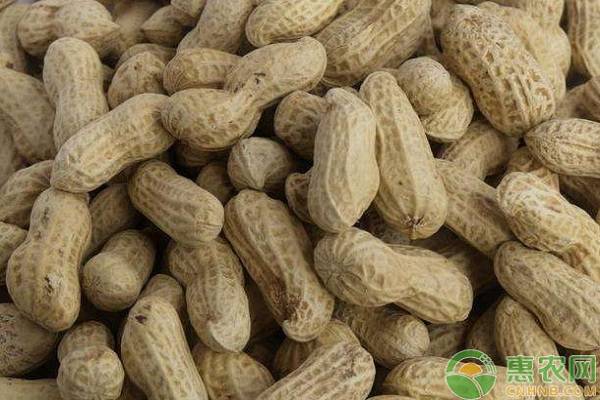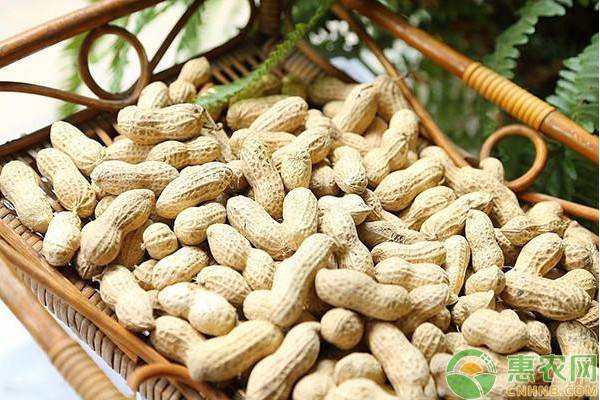Peanut is a relatively common crop. There are many uses for peanuts. It can be used to extract oil. It can be processed into a variety of agricultural and sideline products. Raw peanuts can also raise stomach. The nutritional value can be described as very rich. So how is peanuts grown? Let's take a look at a peanut planting technique.

Deep ploughing
The most suitable soil conditions for peanut growth and development are good drainage, deep and fertile soil, no plate when dry, not sticky when wet, sandy loam or light loam with moderate proportion of sticky sand. Peanut is not resistant to salt and alkali. It can not germinate when the pH value is 8. When the acidity is too high, the calcium, phosphorus, molybdenum and other elements in the soil are not effective, and it is not easy to be absorbed and utilized. It may also cause high-priced iron and aluminum poisoning, so peanut is most suitable. The soil pH is 6.5-7.
Deep ploughing reduces the impact of heavy hoe on yield, increases soil permeability, promotes soil microbial activities, and decomposes insoluble nutrients in the soil for crop absorption and utilization. Combined with application of sand and organic fertilizer, it can effectively increase live Soil layer thickness and soil organic matter content. Because peanuts are deep-rooted crops, the root group is distributed in the living soil layer. The living soil layer is thick, the root amount is large, and the ability to absorb nutrient water is strong, which is very helpful for promoting peanut growth and improving drought tolerance.

Ridge
Ridge planting is a successful experience in increasing peanut yields, significantly increasing yields by increasing the weight of the fruit and the weight of the kernel. Generally, it is carried out half a month before the local sowing. The height of the ridge is 8~15 cm. The width of the ridge is adapted to the local conditions. It can be determined according to the topography and the number of rows. The furrow is 30-40 cm wide.
The advantages of ridge planting are many. One is to increase the light-receiving surface, increase the soil temperature, and thicken the soil layer to ensure that the seedlings and the seedlings are strong. If the mulching is increased by 6% than the flat surface after the ridge, the seedling stage will be higher than the flat temperature. 1.2 ° C, can be emerged 2 days earlier, increase the emergence rate of 5 percentage points, and the root system is more developed than the flat. The second is to prevent fat damage and facilitate the clearing of particles. The third is to make the solid layer loose, which is conducive to the development of fruit needles and pods. The fourth is to make the result layer move up and down, which is easy to harvest and can prevent cockroaches.
3. Apply sufficient base fertilizer
A crop of flowers, all rely on fat to become a master. When ridges are used for peanut fertilization, 80% of the fertilizer should be applied in winter or spring tillage, and 20% of the ridge should be wrapped in the ridge to avoid direct contact between the seeds and the fertilizer, causing fat damage. Although the roots of peanuts are developed and there are rhizobial nitrogen fixation, there is a certain harvest without fertilization, but the requirements for phosphorus and potassium fertilizers are higher than other crops.
4. Sunning grade
Fully sunburn the pods before sowing, improve physiological activity, enhance water absorption capacity and germination potential. If the peanut seeds are directly exposed to the sun, the seed coats will become brittle and burst, so that the seeds lose their protection and are easily rotted. Generally, the fruit is dried for 2-3 days before sowing. Although the initial stage of emergence is only one day earlier than the unseasoned fruit, the seedling stage is 5 days earlier, with an average increase of 8% or more.
After sun drying, peel the shell, try to choose seeds with bright colors, large and full, and the same size as the first-class seeds to sow together, so that the seedlings are out, so as to avoid the symbiosis of large and small seedlings, and the seedlings bullying the seedlings to reduce production. According to experience, the first-class seed is more than 20% more than the mixed species. The suitable time for peeling the pods is about 10 days before sowing. The test and practice prove that the later the peeling, the stronger the seed vigor and the more mature the seedlings.
5. Timely sowing reasonable planting
The sowing period should be appropriate. It is easy to affect the flower bud differentiation when planting early, and it is easy to rot the seedlings before the emergence of low temperature and rain. If the planting is late, the growth period cannot be fully utilized, affecting the effective flower number and pod development, and reducing the yield and quality. Pay attention to the planting density. Generally, the peanuts are about 8000 points per mu. The density of small peanuts can be larger, about 10,000 points, and 2 seeds per hole.

6. Pre-cultivation management points
First, we must investigate seedlings to replant
If the seedlings are found 10-15 days after sowing, timely germination and replanting can be carried out. In addition, when the peanuts are planted, some spare seedlings should be sown in the ground. After the peanuts are unearthed, the soils will be replanted before the leaves are unfolded. root.
The second is clearing the tree
Clearing the tree is to open the surrounding soil after the peanuts emerge, so that the cotyledons are exposed to the ground. The benefits of doing this have not been discussed here.
The third is to cultivate soil
The role of the soil is to shorten the distance between the fruit needle and the ground, so that the fruit needle enters the soil early, increasing the seed setting rate and the fruit filling rate. Note that it is usually carried out after rain or cloudy days before the ridge is closed 15-20 days after flowering.
7. Mid-late cultivation management points
The high yield of peanuts requires no long-term in the medium term and no premature aging in the later period.
The pod-forming period is the most vigorous period of peanut growth, and it is also the peak period of fertilizer and water. Insufficient water and fertilizer will affect the growth process of plants and the fullness of pods. However, the soil fertility base is good and the flowering period is high temperature and rainy. It can also cause the plants to grow long and prematurely, causing the field to be closed, the leaf area to fall, the fruit needles to hang high and the needles to be false and the fruit to be insufficient. Therefore, 30-45 days after the initial flowering, the regulators such as chlormequat or paclobutrazol are adjusted to balance the vegetative growth and reproductive growth of peanuts, increase the rate of photosynthetic products to the pods, and increase the rate of pod formation and fruit filling. Pay attention to the strict use of the dosage and spraying time. Generally, the dosage can be appropriately reduced in the dry year, and the spraying effect on the sunny day is better.
After the pod-forming period, the absorption capacity of peanut roots is weakened, and the main nutrients of stems and leaves are not enough to be used, which is prone to defamation and premature aging. Before the harvest, the leaves of the stems and branches gradually fall off, and only 4-6 pieces of parietal leaves per stem are the basis for maintaining the vitality of the whole plant and performing photosynthesis. In order to enhance the leaf vigor and prolong the functional period, it should be sprayed from the later stage of the results. Foliar fertilizer, spray once every 7-10 days, spray a total of 2-3 times.
8. Harvest and storage
Peanut is an infinite flowering plant. The pods cannot mature at the same time. Therefore, when the new peanuts are harvested, the ripe pods have a water content of about 50%, and the immature pods are about 60%, which must be dried in time. Generally, after 5-6 days of drying, the fruit has a sound, and the water content of the pod is reduced to less than 10%. When the water content of the seed is reduced to 7%, it can be stored in a ventilated and dry place.
In general, peanuts are grown in many areas, but if you want to increase production and income, you must do your daily management.
For the wonderful pictures and popular comments on peanut planting, you may be interested in the following recommended contents of Hui Nong. Welcome to read.
Functional oligosaccharides refer to oligosaccharides that are difficult or impossible to be digested and absorbed by the human body and have special physiological effects on the human body. Its sweetness is generally only 30-50% of that of sucrose, and it has physiological functions such as low-calorie, anti-caries, prevention and treatment of diabetes, and improvement of intestinal colony structure. Due to the special physiological functions of functional oligosaccharides, it becomes a nutrient and health care product. A new generation of food-effect raw materials that integrate diet and therapy. It is a new functional sugar source that replaces sucrose and has a wide range of uses and application prospects. Common functional oligosaccharides include: xylo-oligosaccharides, fructooligosaccharides, galacto-oligosaccharides, isomaltose, raffinose and so on.
XOS, GOS, FOS, IMO, Raffinose, oligosaccharide
Xi'an Gawen Biotechnology Co., Ltd , https://www.ahualyn-bio.com